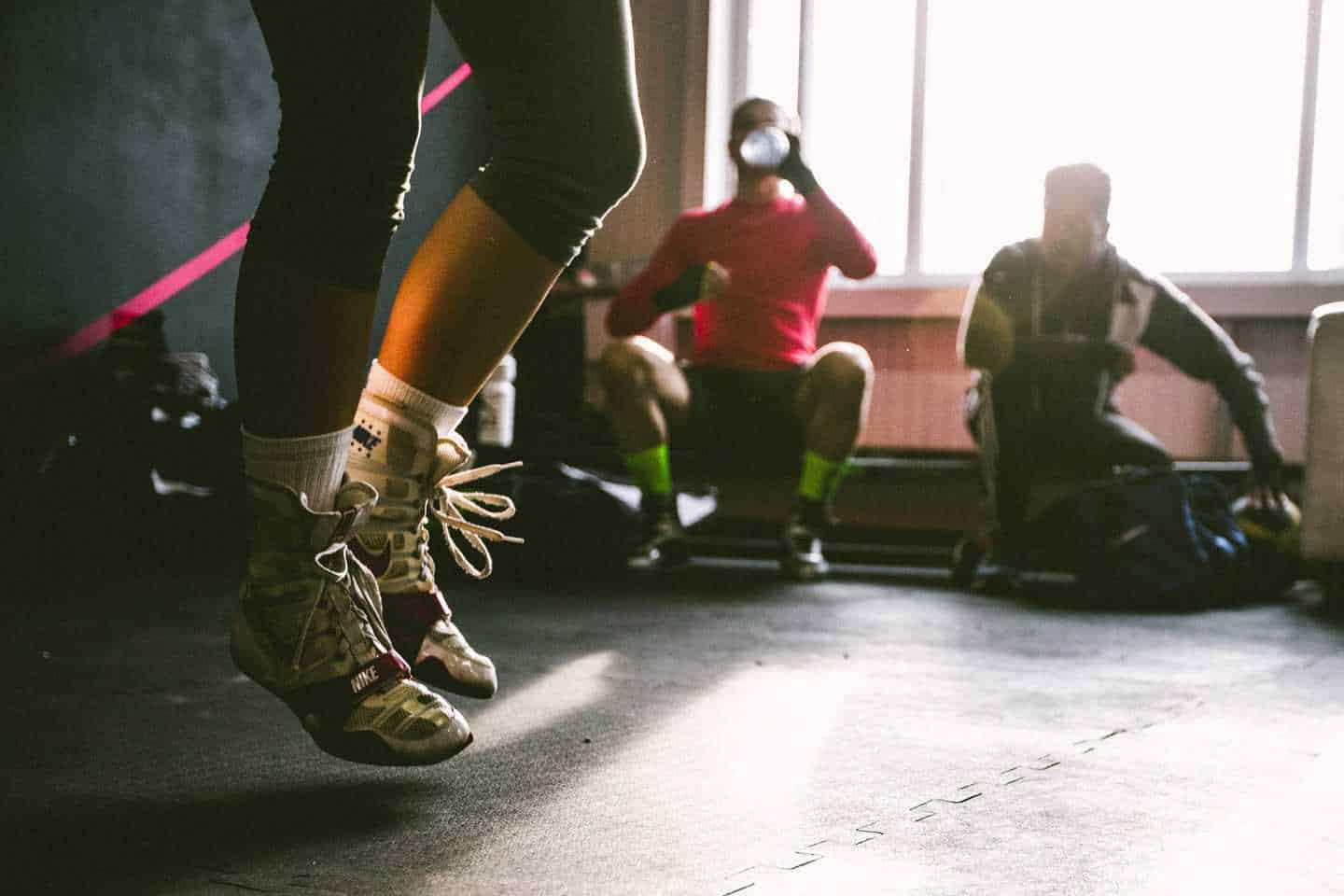Doing “double unders” increases your sprint speed by utilizing the Stretch Shortening Cycle. That is the conclusion of a recently conducted study, the results of which will soon be published in the Journal of Strength and Conditioning Research (1).

I use this recent study as an example of the functioning of the so-called Stretch Shortening Cycle and the advantage of plyometric training. Besides improving sprint speed through rope jumping, you can use it in various other ways for different objectives.
Stretch Shortening Cycle
I have described the Stretch Shortening Cycle (SSC) in articles about stretching and explosive strength and martial arts strength training. Simply put, you can view a muscle as a chain of units that can interlock and release (the filaments in the sarcomeres). These are the motor units of the muscle that provide contraction (shortening) and relaxation of the muscle. The ends of these chains terminate in the attachments, tendons that connect the muscle to the bone that needs to be moved by the muscle. However, these attachments are not simple strings that only connect muscle to bone but also have a function themselves. Because they are elastic, they protect the muscle and allow it to generate more power.
Let’s take the gastrocnemius (calf muscle) as an example. Suppose you jump off a box. When landing, you first place the ball of your foot on the ground. Your feet are pointed downward because the calf muscles pull your heels up via the Achilles tendon, causing your feet to tilt at the ankle joint. For this, you have contracted your calf muscles (tension). After placing the (ball of the) foot, you lower yourself in a controlled manner until your heels touch the ground by reducing the tension of the calf muscles. During this action, the heels are lowered again, and the calf muscles and Achilles tendon are lengthened/stretched. During this stretching of the muscle, the muscle is still held under tension (eccentric contraction). If you were not to land in this way but instead land flat-footed or fail to maintain tension in the calves when landing on the ball of the foot first, the impact would be too great for the various joints from the ankle to the spine. Moreover, you should consider how well your heels would endure such a blow.
Think of a car with wooden wheels and no suspension being dropped from half a meter high. There’s a good chance its axles would break due to the hard impact. However, give that car a suspension, and it absorbs the energy, reducing the impact. Not only is the impact reduced, but the car will slow down, sink, then bounce back up. The suspension has absorbed the energy during the descent and converted it into upward energy. The car would continue bouncing up and down until it comes to a complete stop after a long time if this suspension were not combined with a hydraulic pump. The function of the hydraulic pump is controlled by the viscosity of it within the attachments. Viscosity is the thickness of a liquid, which provides resistance in an attachment.
So, the Achilles tendon absorbs energy (2,3). This absorbed energy means that the muscles need to exert less energy when you want to jump back onto the box immediately (2,4). The resistance due to viscosity ensures that about 5-10% of the energy is not absorbed but converted into heat (5,6).
This lengthening of the muscle under tension (eccentric contraction) and then immediately shortening under tension (concentric contraction) is called the Stretch Shortening Cycle, the cycle of lengthening and shortening of the muscle. This Stretch Shortening Cycle (SSC) is extensively studied due to its energy-absorbing properties that benefit performance.
However, there is still discussion about where exactly this elastic storage occurs. A rubber band that is cut in half can only absorb half the energy. In studies where an attachment was shortened, this had no effect on the muscle’s performance (7). Therefore, it is considered possible that this storage occurs in the aponeurosis (a thin, broad membrane that holds the muscle bundle together and extends into the attachment) or through the elastic properties of the contracting parts of the muscle itself (8,9).
Whatever the exact underlying cause, the stored energy can be utilized. Various studies have aimed (and still aim) to determine how this added value of the Stretch Shortening Cycle can be increased.
References:
- Miyaguchi, Kazuyoshi; Demura, Shinichi; Omoya, Masashi. Relationship between jump rope double unders and sprint performance in elementary school children. Journal of Strength & Conditioning Research:POST ACCEPTANCE, 21 May 2014 doi: 10.1519/JSC.0000000000000543
- ALEXANDER, R. MCN. (1988). Elastic Mechanisms in Animal Movement. Cambridge: Cambridge University Press.
- R. McNeill Alexander (2002). Principles of Animal Locomotion. Princeton University Press. ISBN 0-691-08678-8.
- A. L. Hof and J. W. van den Berg (1986). “How much energy can be stored in human muscle elasticity?”. Movement Science 5 (2): 107–114. doi:10.1016/0167-9457(86)90018-7.
- KER, R. F. (1981). Dynamic tensile properties of the plantaris tendon of sheep (Ovis aries). J. exp. Biol. 93, 283–302.
- RIEMERSMA, D. J. AND SCHAMHARDT, H. C. (1985). In vitro mechanical properties of equine tendons in relation to crosssectional area and collagen content. Res. vet. Sci. 39, 263–270.
- R. Baratta and M. Solomonow (1991). “The effect of tendon viscoelastic stiffness on the dynamic performance of isometric muscle”. Journal of Biomechanics 24 (2): 109–116. doi:10.1016/0021-9290(91)90355-Q. PMID 2037610.
- CAVAGNA, G. A. (1977). Storage and utilization of elastic energy in skeletal muscle. Exercise Sport Sci. Rev. 5,89-129.
- Ettema, G.J.C., Huijing, P.A., 1989. Properties of the tendinous structures and series elastic component of EDL muscle tendon complex of the rat. Journal of Biomechanics 22, 1209}1215.
- http://www.buildmybody.nl/stretch-shortening-cycle-mannen-smokkelen-meer-dan-vrouwen/
- Stockbrugger BA, Haennel RG. Validity and reliability of a medicine ball explosive power test. J Strength Conditioning Res. 2001;15(4):431–438

